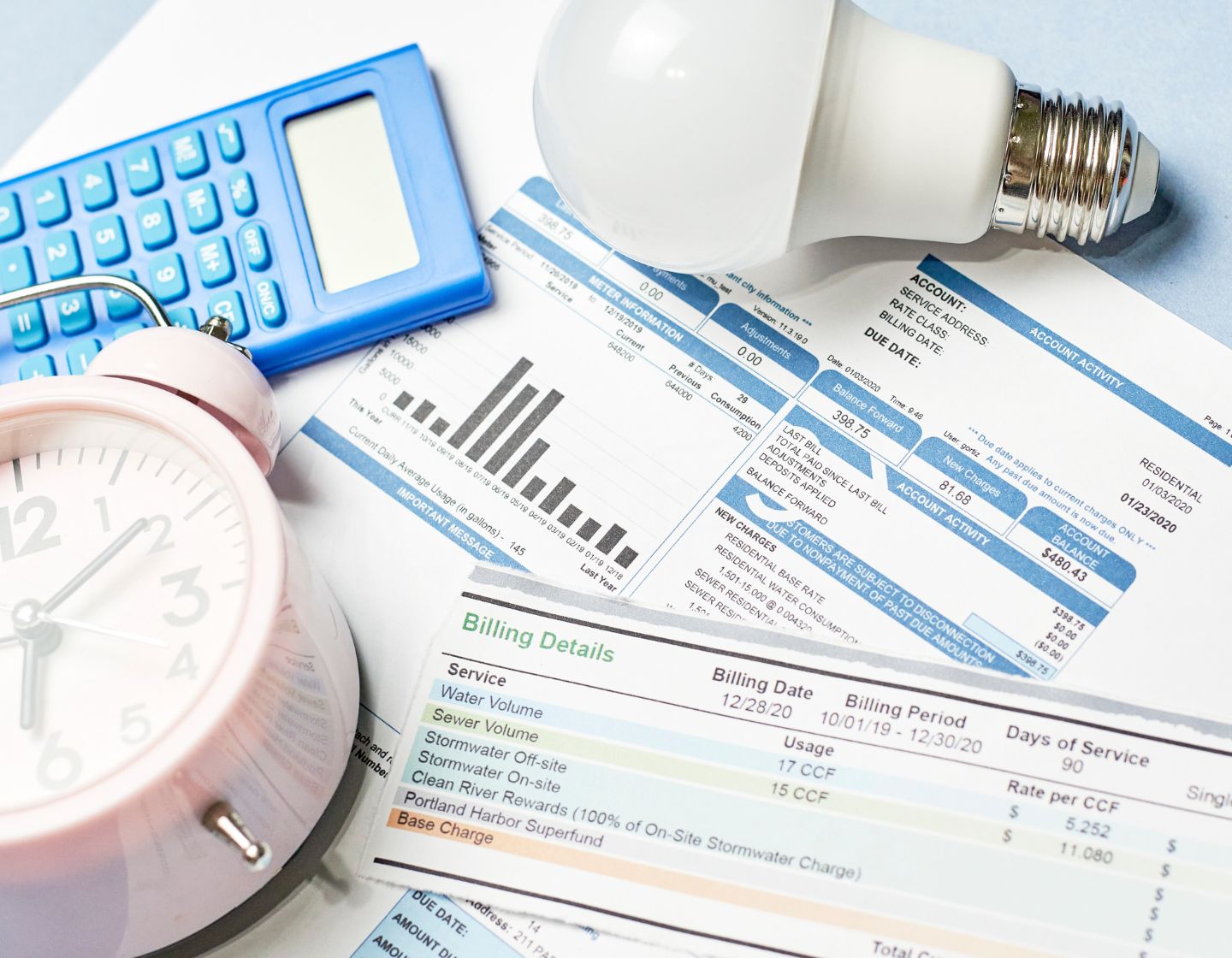Energy Price Guarantee – what happens next?
The Energy Price Guarantee has just been extended at the same level for 3 more precious months; but what is it, how does it differ from the Energy Price Cap and what happens next?
The Energy Price Guarantee (EPG) is a short-term scheme which helps domestic consumers deal with the shocking increases in wholesale gas prices that have led to much higher bills.
It was introduced last Autumn in response to concerns about effects of a proposed 80% increase in energy prices. The then Prime Minister Liz Truss announced that the EPG would run for 2 years from October 1st, guaranteeing that the average or typical household energy bill annually would be no more than £2500 during that period.
Under the scheme, the Government sets maximum prices for gas and electricity and compensates energy suppliers for providing these at below cost prices.
Following her administration’s collapse, the new government revised the scheme on cost grounds, keeping the £2,500 limit for the first 6 months (October 2022 to April 2023) followed by an increase to £3,000 until April 1st 2024. It applies to all households in England, Scotland and Wales, with the same level of support in Northern Ireland.
No maximum energy bill
The Chancellor has just revised this again, extending the £2,500 ceiling until July 1st. It means that consumers will pay less for their energy than they would under the Energy Price Cap.
This does not mean that there is a maximum limit on an energy bill – every unit consumed is paid for in some way. The guarantee is simply that if a bill exceeds the annual limit, then the compensation for providers kicks in and the consumer temporarily pays less.
Not surprisingly, many people are a bit confused by the figures and how they relate exactly to individual energy bills. When it’s reported that that the EPG is going up to £3,000 for a typical household, it’s an average and gives a general idea of how high or low energy bills are getting but may not exactly represent a specific energy bill.
It’s the annual bill that dual fuel gas and electricity customers with typical consumption levels would face if prices remained constant across a year. Households which use more energy will pay more, those which use less will pay less.

What’s the Energy Price Cap?
The Energy Price Cap was introduced by energy regulator Ofgem on January 1st 2019 to protect consumers from volatile and sharply increasing wholesale prices that might push more people into fuel poverty. It aims to protect over 11 million household energy customers, ensuring they pay a fair price for energy.
It sits alongside the EPG and is likely to be in place for a much longer time. It’s revised every 3 months and sets a maximum price that energy suppliers can charge consumers for each kilowatt hour (kWh) of energy they use but the level of every energy bill depends on how much energy is consumed.
The price cap doesn’t apply to those on a fixed-term energy tariff as well as some green and special time of use deals.
The cap had been due to rise on October 1 by 80% to £4,279, affecting 24 million people – hence the government decision to launch the EPG scheme.
The price cap limits the amount a supplier can charge on a default tariff. It includes:
- The standing charge (a fixed daily amount, regardless of how much energy is used).
- The price for each unit of electricity and gas (measured in pence per kilowatt hours, or p/kWh).
The price cap is calculated using these values:
| Energy Use | Example- home type and number of residents | Typical annual gas use (kWh) | Typical annual electricity use (kWh) |
|---|---|---|---|
| Low | Flat or 1-bedroom house; 1-2 people | 8,000 | 1,800 |
| Medium | 2-3 bedroom house; 2-3 people | 12,000 | 2,900 |
| High | 4+ bedroom home; 4-5 people | 17,000 | 4,300 |
| Energy Use | Example- home type and number of residents | Typical annual gas use (kWh) | Typical annual electricity use (kWh) |
|---|---|---|---|
| Low | Flat or 1-bedroom house; 1-2 people | 8,000 | 1,800 |
| Medium | 2-3 bedroom house; 2-3 people | 12,000 | 2,900 |
| High | 4+ bedroom home; 4-5 people | 17,000 | 4,300 |
Source: Ofgem
From April 1st the price cap will drop by 20% to £3,280 for average use, and this reflects the drop in wholesale prices. Energy market analysts Cornwall Insight predict that energy prices will fall from July and that the energy price cap will drop below the EPG rate this year.
It forecasts that the price cap from July to September will be £2,153.34 – 28% less than the EPG rate from April (£3000). This means households would pay around £847 more under the EPG than the price cap set by Ofgem. It estimates that from October-December the cap will be £2,161, around 27.9% less than prices set under the EPG.
This might mean that the government will move households back onto the price cap rate but the energy markets remain volatile. The decision is likely around the time of the next price cap announcement by Ofgem on May 26th. Again, the price cap gives people an insight into what they might pay but is not a limit on total monthly bills.
Ofgem uses a range of metrics to calculate the price cap, including:
- Wholesale energy costs
- Network costs
- Policy costs.
- Supplier operating costs
- VAT: 5% tax is added to the level of the tariff.
The regulator assesses the price cap around a typical domestic customer with medium energy use. It estimates the typical household in Britain uses 2,900 kWh of electricity and 12,000 kWh of gas annually.
Both the price cap and the price guarantee are calculated using Typical Domestic Consumption Values (TDCVs), which give consumers an idea of the average energy use of different households.
Bills 4 times higher
Through all this, it’s important bear in mind that that energy costs are up to 4 times higher than before start of the Ukraine war started, affecting gas supplies and triggering huge rises in wholesale market prices.
And it’s also crucial to understand that Ofgem regulates the energy suppliers but not the oil and gas production sector, which have been reporting eye-wateringly high profits, and benefiting massively from the steep rises in wholesale energy prices.
The Autumn Statement announced new funding of £6bn to reduce demand in homes and businesses – but this will only start to flow in 2025 and while the government target is to reduce energy consumption from buildings and industry by 15%, households can achieve more.
With the Energy Bill Support Scheme ending there will be no more relief from that one-off £400 discount on fuel bills.
The continued volatility of energy markets indicates that while lower wholesale prices should feed into short-term reductions in bills, the trend is upwards over the longer term. This means that the only way to have control of energy bills is to reduce usage permanently and sustainably.
The SaveMoneyCutCarbon Home app is a free tool to help all households use less energy – as well as saving water, plastic and carbon. There are easy sustainable product swaps along with a library of articles to help cut consumption and support a more sustainable life.

What help are businesses getting?
Despite appeals from a wide range of business organisations, the government has not extended the Energy Bill Relief scheme, which ends on April 1st. There is a new scheme from that date, under which firms will get a discount on wholesale prices rather than costs being capped.
Companies will only benefit from the scheme when energy bills are high and energy-intensive sectors like steel, glass and ceramics will get a larger discount than others.
SaveMoneyCutCarbon provides a full range of services and solutions to help companies reduce both energy use and carbon emissions. As the first step, we’ll offer you a free 30-minute consultation call with one of our IMEI carbon mentors.


